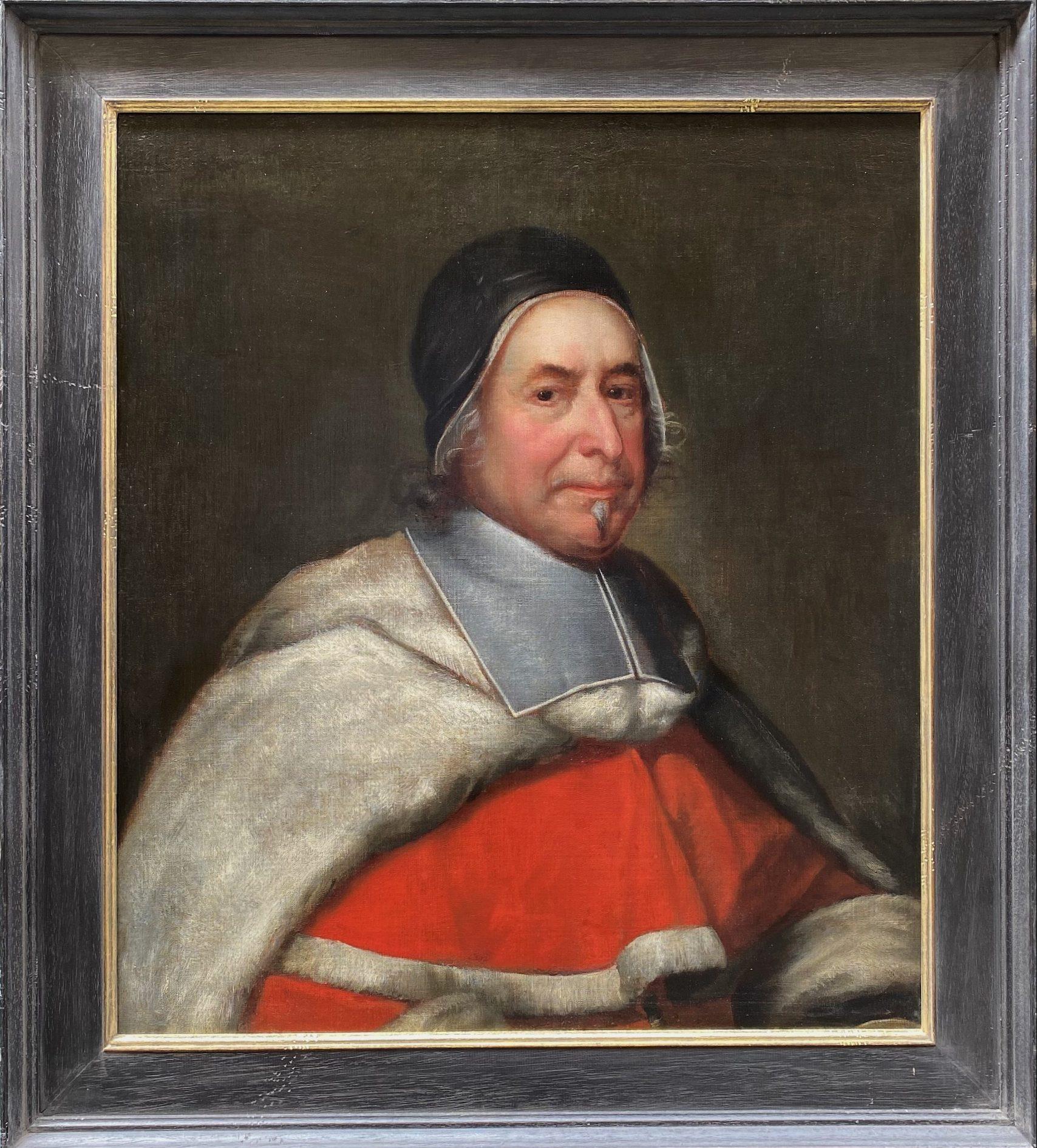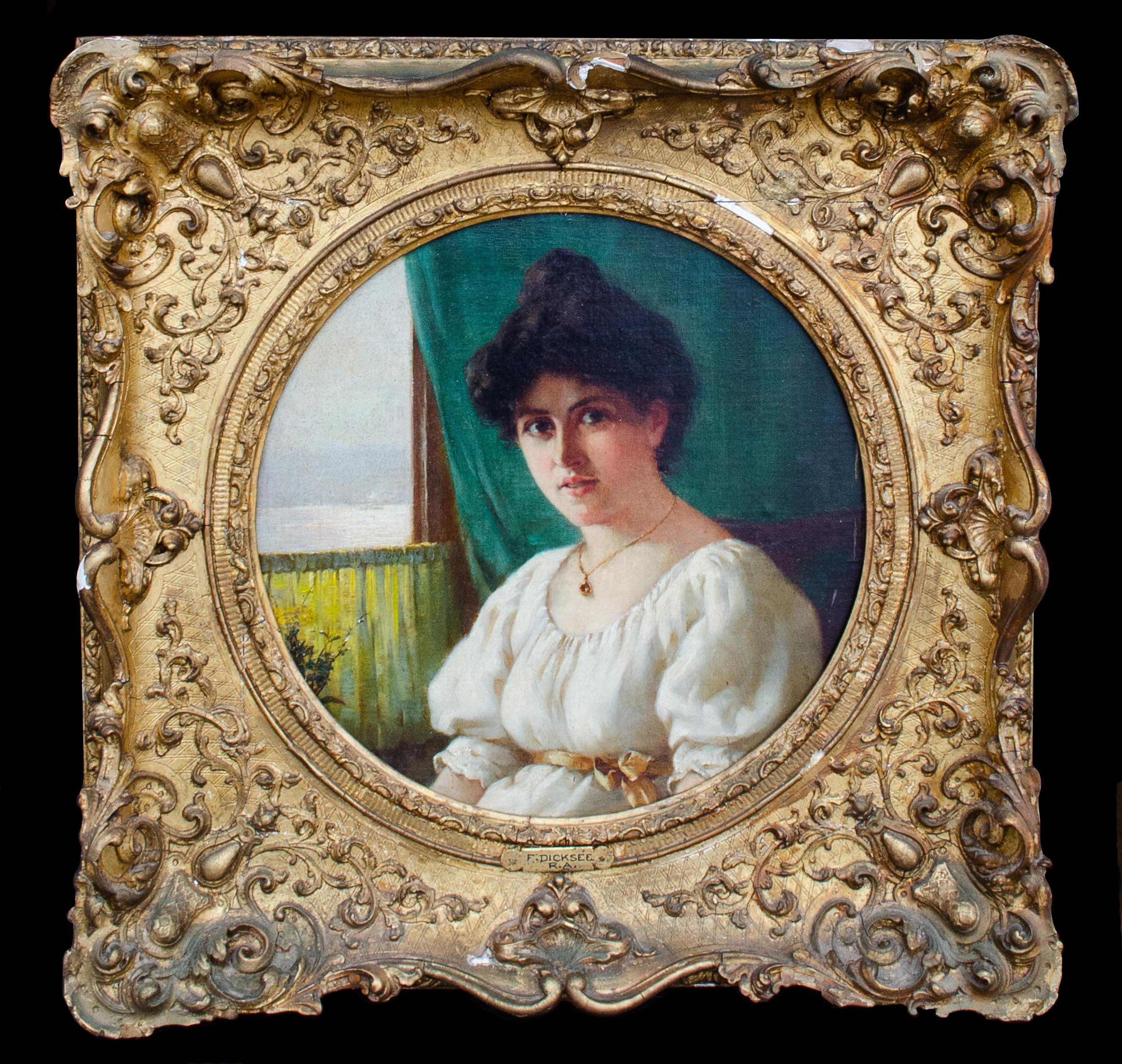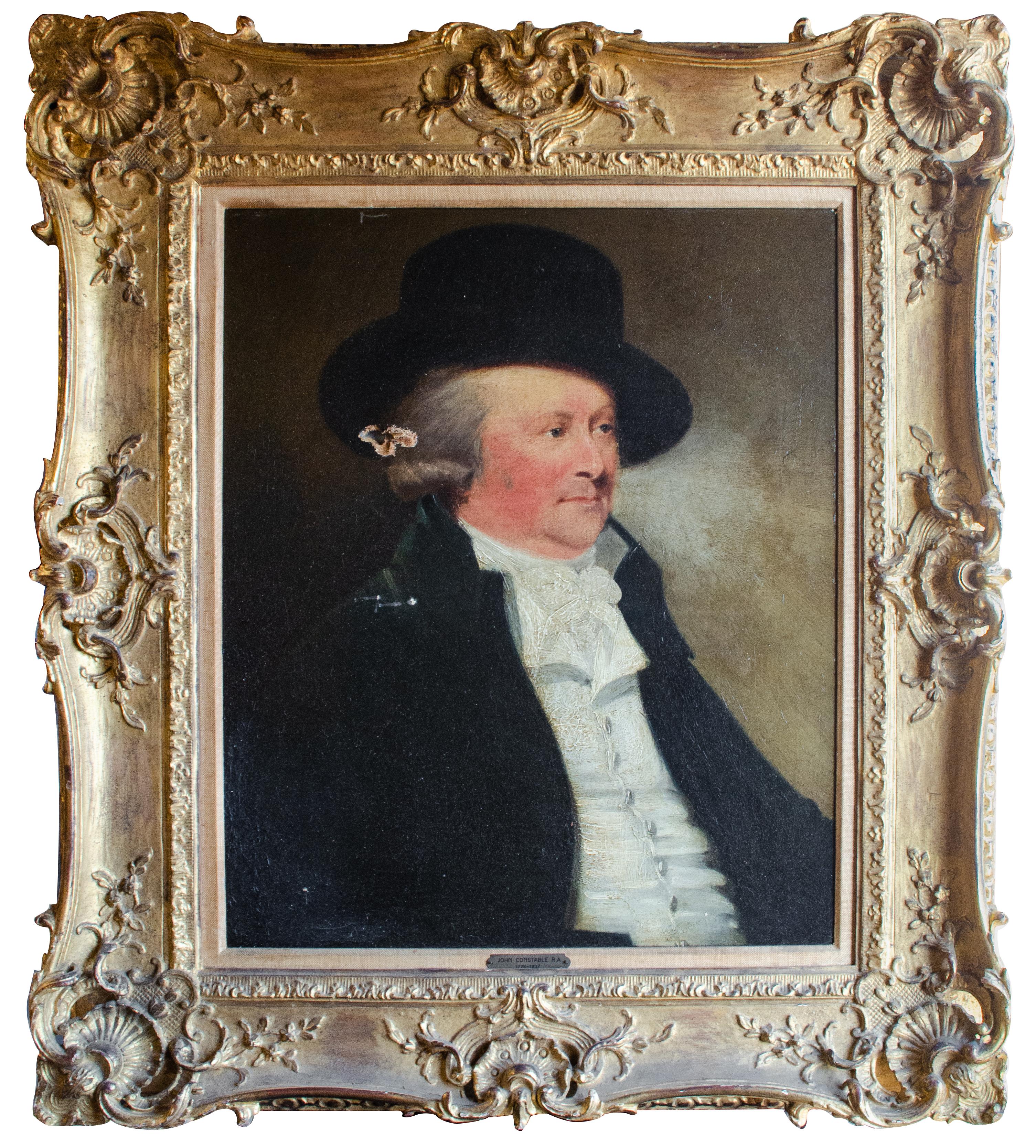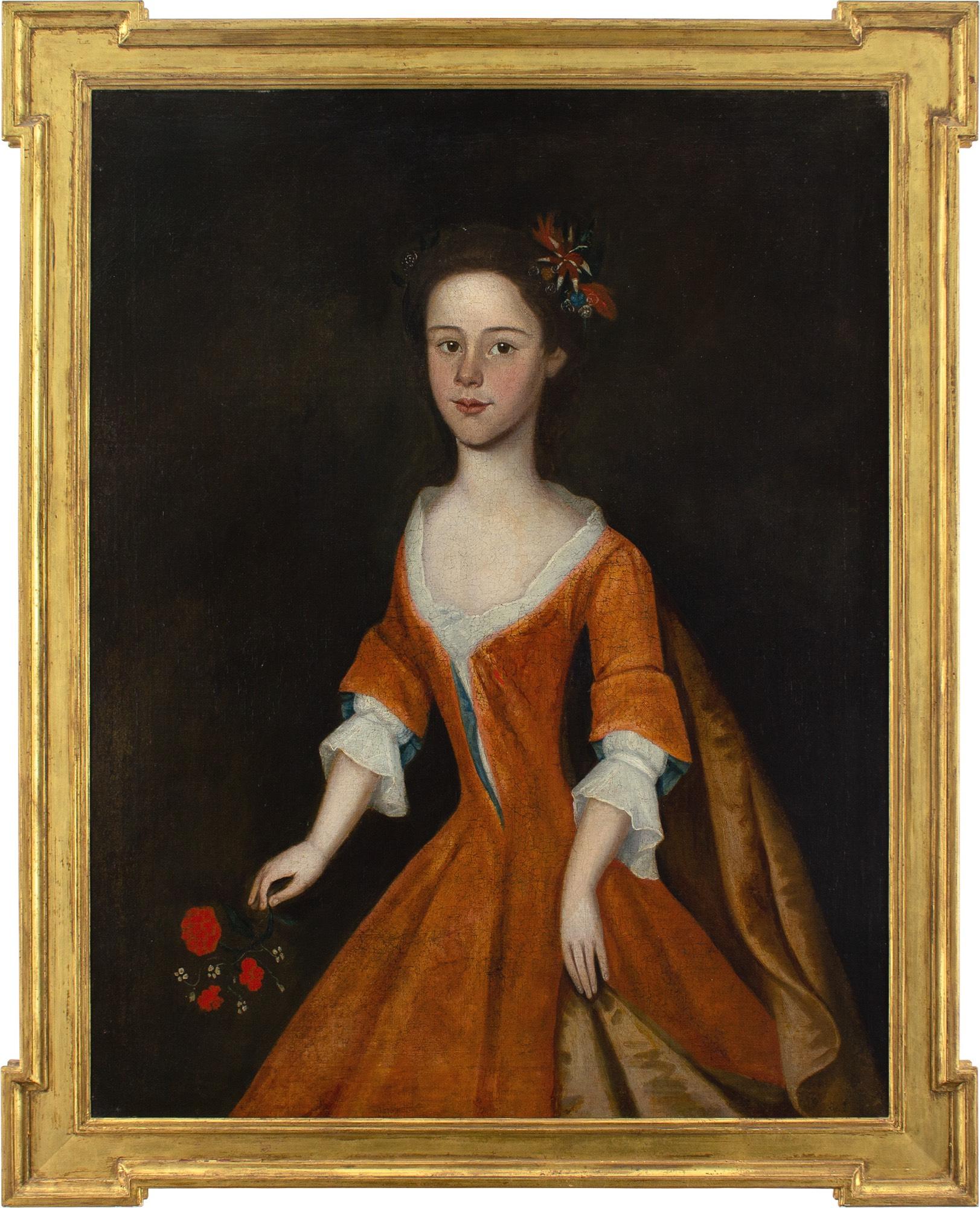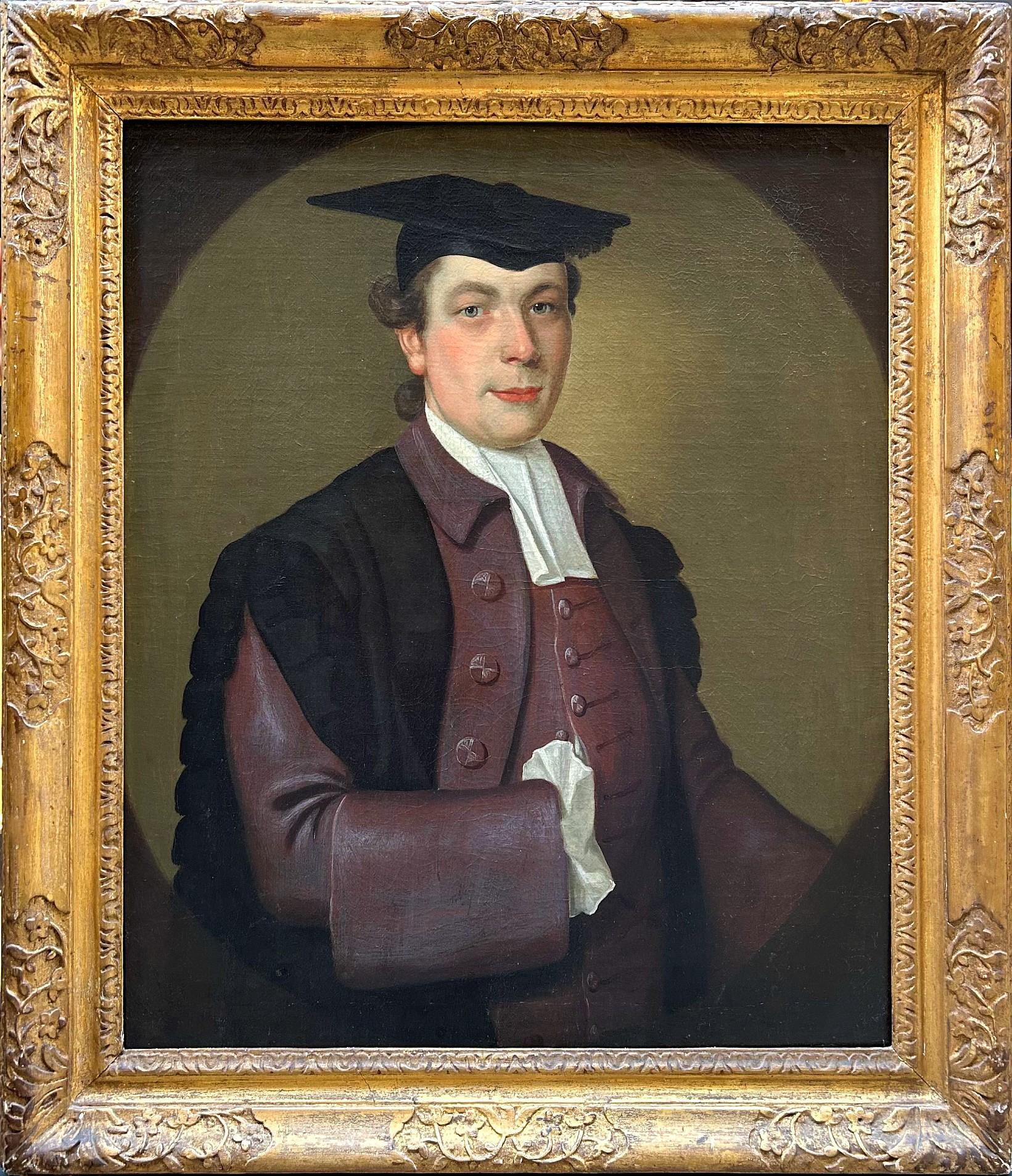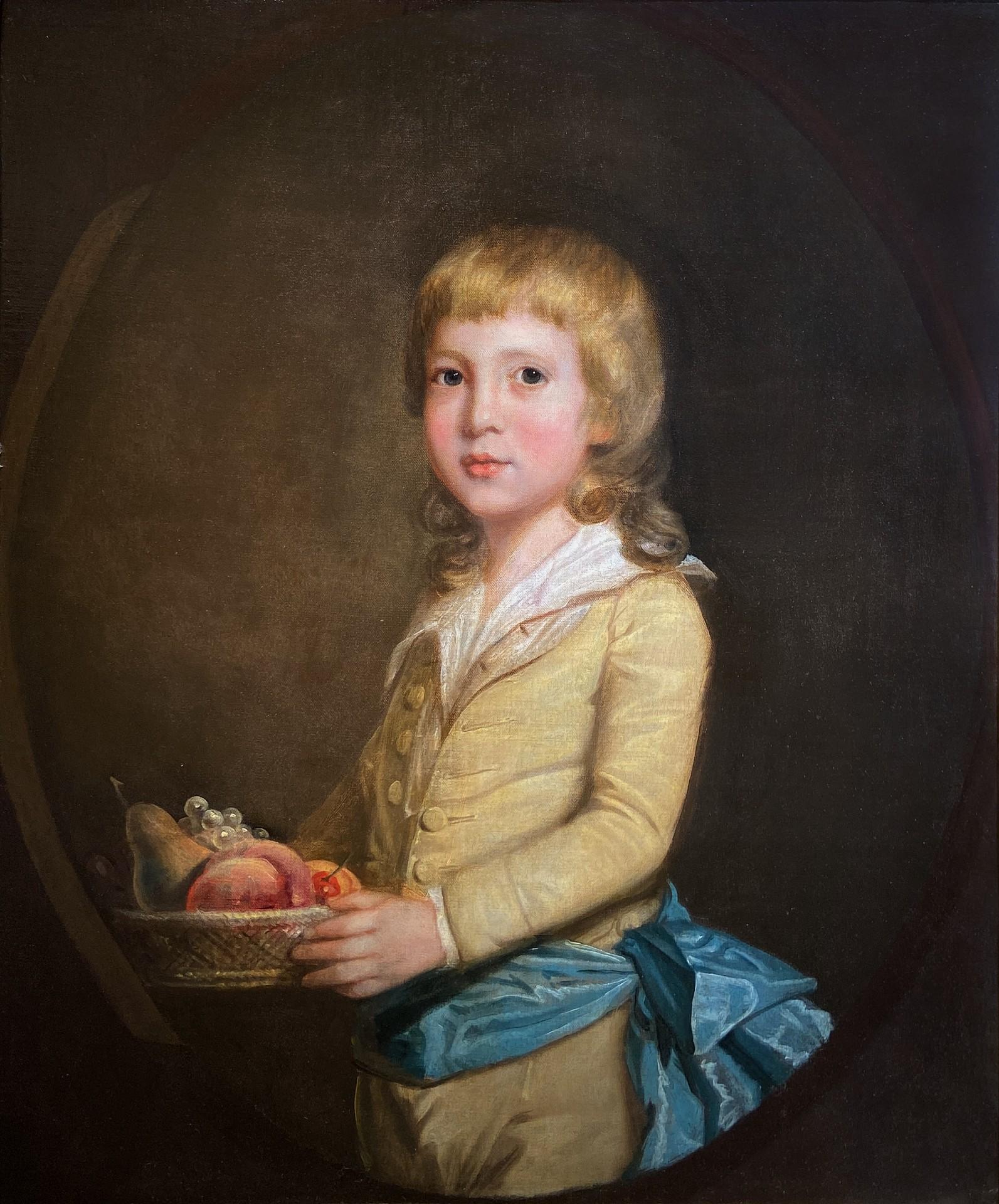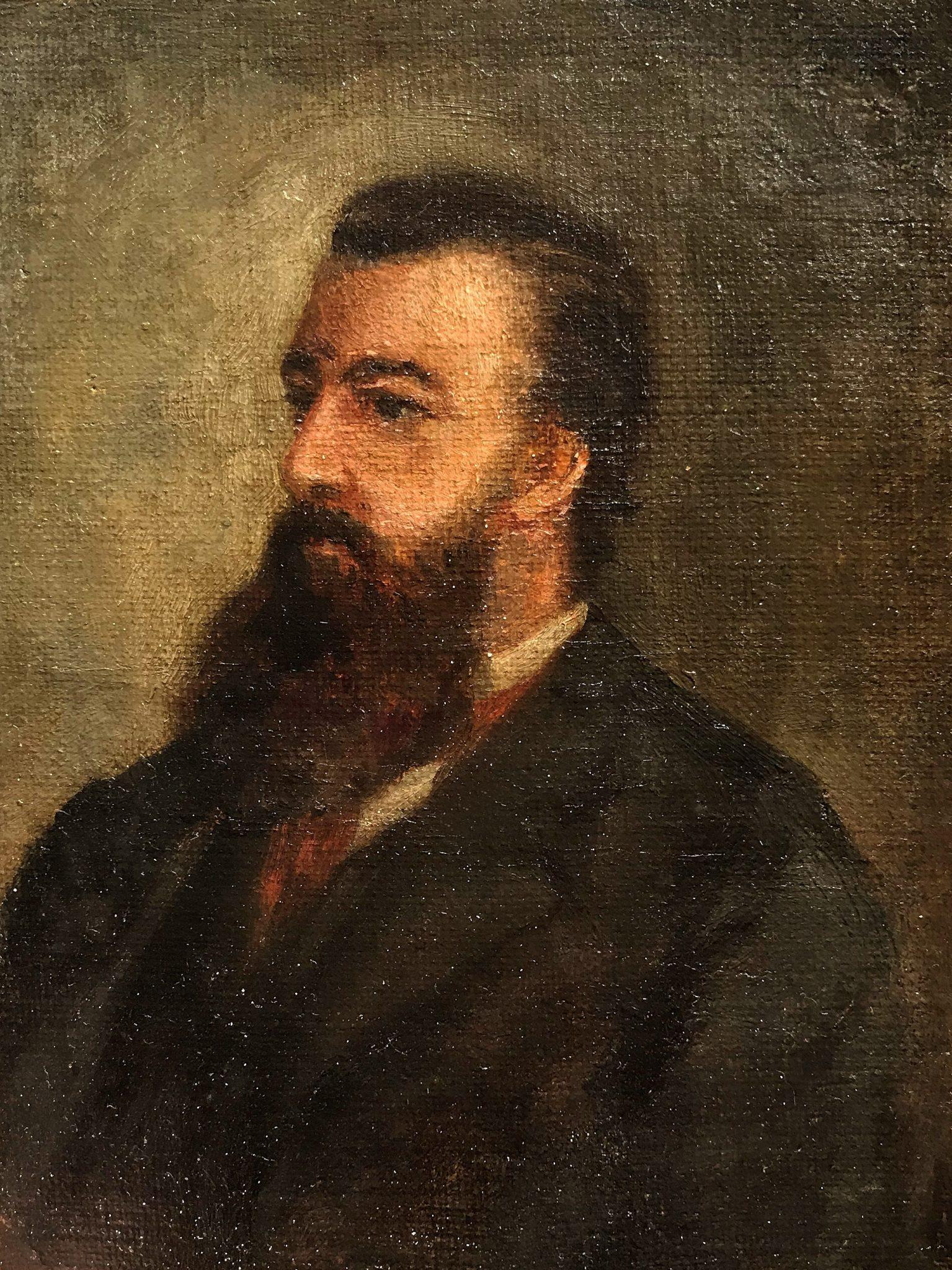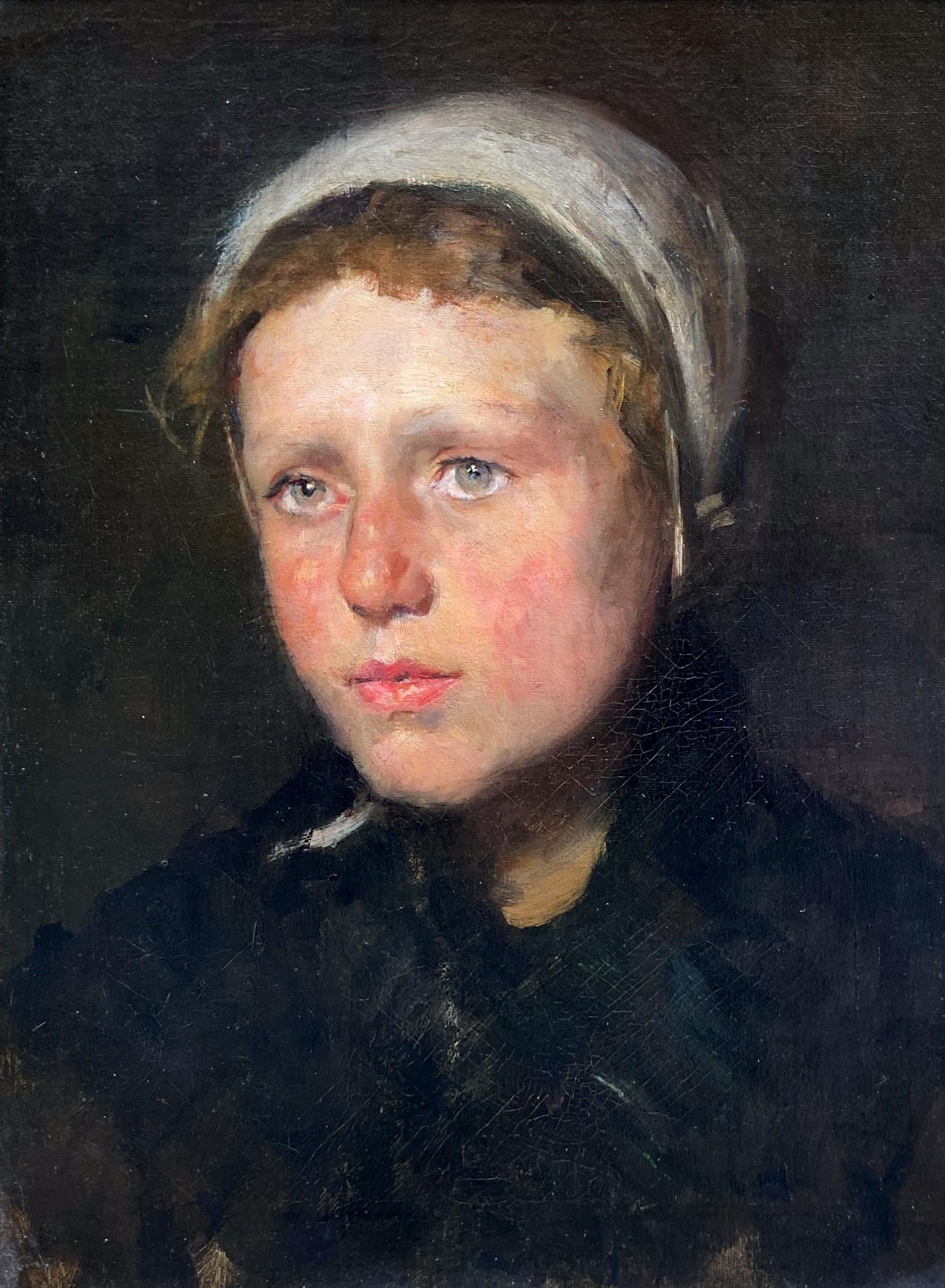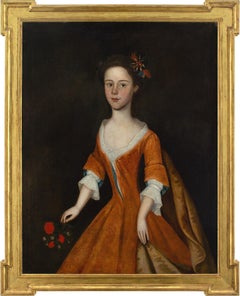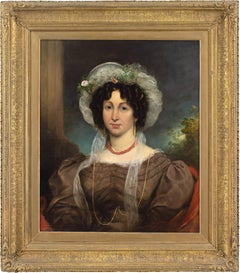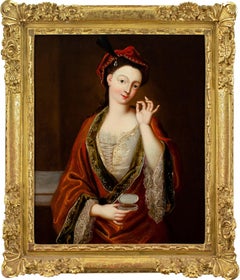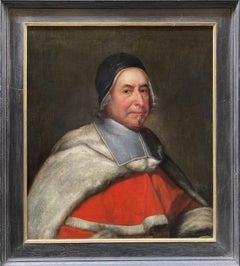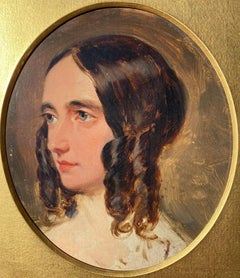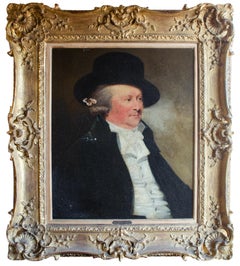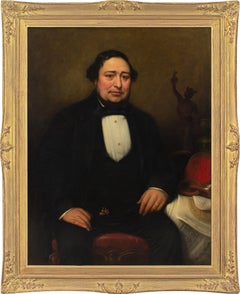
Thornton Rippingille, Portrait Of The Inventor Thomas Dunn, Oil Painting
View Similar Items
Want more images or videos?
Request additional images or videos from the seller
1 of 12
Thornton RippingilleThornton Rippingille, Portrait Of The Inventor Thomas Dunn, Oil Painting1857
1857
Price:$2,451.30
$2,724.43List Price
About the Item
- Creator:Thornton Rippingille (1830 - 1863, British, English)
- Creation Year:1857
- Dimensions:Height: 52.5 in (133.35 cm)Width: 42.5 in (107.95 cm)
- Medium:
- Movement & Style:
- Period:
- Condition:Artwork presents well. Fine craquelure but the paint is stable. Frame with some light wear.
- Gallery Location:Cheltenham, GB
- Reference Number:1stDibs: LU2328213264422
About the Seller
5.0
Platinum Seller
Premium sellers with a 4.7+ rating and 24-hour response times
Established in 2017
1stDibs seller since 2023
238 sales on 1stDibs
Typical response time: 1 hour
Authenticity Guarantee
In the unlikely event there’s an issue with an item’s authenticity, contact us within 1 year for a full refund. DetailsMoney-Back Guarantee
If your item is not as described, is damaged in transit, or does not arrive, contact us within 7 days for a full refund. Details24-Hour Cancellation
You have a 24-hour grace period in which to reconsider your purchase, with no questions asked.Vetted Professional Sellers
Our world-class sellers must adhere to strict standards for service and quality, maintaining the integrity of our listings.Price-Match Guarantee
If you find that a seller listed the same item for a lower price elsewhere, we’ll match it.Trusted Global Delivery
Our best-in-class carrier network provides specialized shipping options worldwide, including custom delivery.More From This Seller
View AllMid-18th-Century English School, Portrait Of A Girl With A Posy
Located in Cheltenham, GB
This exceedingly charming mid-18th-century English oil painting depicts a girl wearing a red gown with a train over a white petticoat. She’s holding a posy or nosegay.
Evidently once commissioned for an English country house, the identity of this young lady remains a mystery. Her gown appears to be inspired by the popular ‘robe à la française...
Category
1740s English School Portrait Paintings
Materials
Oil, Canvas
George Clint ARA (Attributed), Portrait Of A Lady In A Brown Dress
Located in Cheltenham, GB
This early 19th-century half-length portrait attributed to British artist George Clint ARA (1770-1854) depicts a young lady wearing a beautiful brown dress, bonnet decorated with small flowers, gold earrings and coral necklace. Clint was a distinguished painter and mezzotint engraver predominantly known for portraiture and dramatic scenes.
Set before an evocative classically-inspired backdrop, she looks out from across the centuries with a composed demeanour. Adorned in the latest fashions, oversized ‘gigot’ sleeves, a delicately-poised bonnet, and a coral necklace for good luck. It’s a charming portrayal by a masterful hand.
Born at Drury Lane, in the heart of London’s West End, George Clint was destined to lead an exuberant life amid the spectacle of theatreland. His father, Michael Clint, was a hairdresser during a time of “hair pomatum, whalebone, wire, lace gauze, and feathers” - so young George would have encountered a variety of ‘characters’ during his childhood.
But despite these elevated surroundings, he soon discovered the darker side of London when thrust into the world of employment. Apprenticed initially as a fishmonger, he trained under a ferocious master who was known to beat him. The hours were unsocial, the conditions rank, and the work was brutal. He soon quit but subsequently found himself toiling for a corrupt attorney who demanded he undertake unscrupulous acts on his behalf.
Seeking a less volatile role, he turned next to house painting, at which he excelled. Commissioned, among other projects, to paint the stones of the arches in the nave of Westminster Abbey. Aside from an incident whereby he almost fell from the second story of a building, all was going well.
Following his marriage in 1792 to Sarah Coxhead, a farmer’s daughter, he began work in earnest as a painter of miniatures, determined to forge a career. Robert William Buss’ memoir celebrates Clint’s success as a miniaturist, stating that “great manual excellence was united with that chaste, delicate feeling for female beauty which characterised all Mr. Clint's portraits of ladies.”
Until this point, it appears he was predominantly self-taught, presumably constrained by a lack of finances. But from hereon in, his industrious nature coupled with several fortunate encounters, led to him developing an enviable talent for both painting and engraving. During the early 19th-century, the acquaintances one kept could make or break your fortunes and perhaps acutely aware of this, Clint’s ‘society’ was an ever-evolving circle of influential personalities.
He was “initiated into the mysteries of engraving” by Edward Bell (act.1794-1819) and produced numerous works after the foremost artists, such as George Stubbs, John Hoppner, and Thomas Lawrence. Following a commission from Lawrence, he struck up a long-term friendship.
Admired for his skill as a mezzotint engraver, he sought next to hone his technique in oils and, as with many aspiring portraitists, his first work in this respect was a depiction of his beloved wife. The pair were both delighted with it, yet over time Clint began to doubt himself and sought the validation of a superior hand - that of Sir William Beechey (1753-1839). However, paralysed with insecurity, he couldn’t face the potential criticism, so his wife took it instead - “with a child under one arm and the portrait in the other”. The result was immeasurably more positive than he’d envisaged and he became closely associated with Beechey until his death in 1839.
Numerous commissions followed from the landed gentry including Lord Egremont, Lord Spencer, and Lord Essex. But also from the theatrical community who would fill his studio at 83 Gower Street, Bloomsbury. His connections within the world of acting led to notable works such as ‘Malvolio and Sir Toby’ (from William Shakespeare's 'Twelfth Night', Act II, Scene iii)’ and ‘Harriet Smithson as Miss Dorillon, in Wives as They Were, and Maids as They Are’.
While his efforts in mezzotint included several contributions to JMW Turner’s Liber Studiorum.
As a measure of his success, Clint was elected an Associate of the Royal Academy in 1821 - a position he later relinquished for personal reasons. Today, he’s represented in numerous public collections including at The British Museum, Harvard Art Museums, The Met, V&A, Yale Center for British Art, and the National Portrait Gallery.
“The respect in which he was held, not only by his brother artists, but by an immense number of eminent men in various professions, and others of the highest rank, was the result of a rare combination of talent, candour, suavity of manner, and integrity of purpose”. [Obituary, 1854].
Housed in a period gilt frame, which is probably original.
Learn more about George Clint ARA in our directory.
Labels & Inscriptions: Supplier’s stencil from Rowney & Forster. The National Portrait Gallery holds a database of supplier’s stencils over the decades. The one here is also presented on two other works by George Clint. ‘Falstaff’s Assignation with Mrs Ford...
Category
1830s English School Portrait Paintings
Materials
Oil, Canvas
Early 19th-Century English School Portrait Of Samuel Jones Of Skeyton, Norfolk
Located in Cheltenham, GB
This fine early 19th-century English oil painting depicts Samuel Jones of Skeyton, Norfolk, smartly attired in a black coat with white cravat. The portrait was previously in the coll...
Category
1830s Portrait Paintings
Materials
Canvas, Oil
Jacques François Courtin (Circle), Portrait Of A Lady Taking Snuff
Located in Cheltenham, GB
This exquisite early 18th-century half-length portrait depicts a young lady taking snuff from a silver holder. Stylistically, it’s reminiscent of works by French painter, Jacques Fra...
Category
1720s Rococo Portrait Paintings
Materials
Oil, Canvas
Giovanni Rota, Portrait Of A Girl In A Straw Hat
Located in Cheltenham, GB
This fine late 19th-century oil painting by Italian artist Giovanni Rota (1832-1900) depicts a cheerful young lady looking back over her shoulder with a straw hat and lilac ribbon.
...
Category
1880s Italian School Portrait Paintings
Materials
Oil, Canvas
Anton Benno Zottmayr, Portrait Of A Gentleman With A Letter
Located in Cheltenham, GB
This charming mid-19th-century oil painting by German artist Anton Benno Zottmayr (1795-1865) depicts a gentleman holding a letter. Zottmayr was an accomplished painter of portraits,...
Category
1850s Folk Art Portrait Paintings
Materials
Oil, Canvas
You May Also Like
Portrait of a Judge, 17th Century English Oil Portrait Painting
Located in London, GB
Oil on canvas, on board
Image size: 30 1/4 x 27 inches (76.75 x 68.5 cm)
Contemporary style handmade frame
This is a attention-holding portrait of a 17th century English judge...
Category
17th Century English School Portrait Paintings
Materials
Oil, Board
A Young Lady
By William Edward Frost
Located in London, GB
Oil on board
Image size: 5 1/2 x 4 1/2 inches (14 x 11.5 cm)
Original 19th century oval mount and frame
Provenance;
With Richard Naworth, Blackburn
William Edward Frost (September 1810 – 4 June 1877) was an English painter of the Victorian era. Virtually alone among English artists in the middle Victorian period, he devoted his practice to the portrayal of the female nude. Specialising in portraiture from about 1830, Frost painted more than 300 portraits during a 15-year period, and showed some as his first exhibits from 1836.
William Edward Frost was born in Wandsworth, then in Surrey, in September 1810. He showed artistic talent from an early age, and was encouraged in this by his father: first by his arranging drawing lessons with a Miss Evatt, a neighbouring amateur, and then, in 1825, by his introducing him to William Etty, who became his mentor. On Etty’s recommendation, he entered Henry Sass’s School for Drawing and Painting at 6 Charlotte Street, in 1826, and spent three years there, while also studying at the British Museum each winter.
Frost was educated in the schools of the Royal Academy, beginning in 1829; he established a reputation as a portrait painter before branching into historical and mythological subjects, including the subgenre of fairy painting...
Category
19th Century English School Portrait Paintings
Materials
Oil, Board
Antique Late 19th Century English Oil on Canvas Painting Female Portrait 1900
Located in Portland, OR
Antique English oil on canvas portrait painting, circa 1900. A very handsome Impressionist portrait of a youthful lady in Edwardian dress. Oil on canvas, signed to the upper left "F ...
Category
Early 1900s English School Portrait Paintings
Materials
Canvas, Oil
Portrait After John Constable, Sotheby's Provenance
By John Constable
Located in New York, NY
After John Constable (British, 1776-1837)
Portrait of A Man, c. 1800
Oil on canvas
23 3/4 x 19 3/4 in.
Framed: 34 x 29 3/4 x 2 3/4 in.
Sotheby'...
Category
19th Century English School Portrait Paintings
Materials
Canvas, Oil
Sir Francis Dicksee Portrait, c. 1900
Located in New York, NY
Sir Francis Dicksee (English, 1853-1928)
Untitled (Portrait of a Woman), c. 1900
Oil on canvas; period frame
Sight: 13 1/4 in.
Framed: 21 1/8 x 21 1/8 x 3 3/8 in.
Frank Dicksee was a member of a noted artistic family, his father, brother, and sister Margaret were all well-known painters, and the family lived in the Bloomsbury area of London. He was initially trained by his father, before entering the Royal Academy schools in 1870. Amongst the visiting lecturers who trained him, were the famous senior academicians Leighton [1830-1896] and Millais [1829-1896].
Dicksee was a star student, earning many distinctions and medals. Like many other artists of the day his early career was largely spent in book illustration, as well as some stained glass window design. He started exhibiting at the RA in the mid 1870s, and also exhibited at the Grosvenor Gallery, though his real base was always the Academy. Dicksee made his reputation with Harmony, exhibited at the Academy in 1877, and bought by the Chantry Bequest.
Frank Dicksee was elected ARA in 1881, and became a full RA ten years later. Many of his pictures were of dramatic historical and legendary scenes. He also was a noted painter of elegant, highly-finished portraits of fashionable women, which of course helped to bring him material success. Many of these portraits are so beautiful, it is really difficult to disapprove of them - happy was the fashionable lady whose portrait was painted by Dicksee! He also painted landscapes.
Dicksee lived in St John's Wood, and remained a bachelor. He was, of course, one of the nineteenth century artists who outlived his time, and was, to his credit, very unhappy with developments in the early twentieth century. Rather surprisingly, Dicksee was elected President of the Royal Academy in 1924, fulfilling the role with panache and tact. Physically he was a tall, good-looking, patrician figure, with a charming easy-going manner. Like his predecessor but one Edward Poynter...
Category
Early 1900s English School Portrait Paintings
Materials
Oil, Canvas
Oil on Canvas Portrait of Mother and Child
Located in Fredericksburg, VA
This painting is unsigned but evidence shows that it is from a European school. It shows a mother with a child on her lap as well as a forest background. Likely wealthier patrons due...
Category
Mid-19th Century English School Portrait Paintings
Materials
Canvas, Oil
Recently Viewed
View AllMore Ways To Browse
Lady With Red Hair
British Military Portrait
Large 16th Century Oil Paintings
Portrait Bishop
Middle Eastern Portrait
Portrait Collar Dress
Art Deco Female Portrait
17th Century Oil On Panel Portrait
Empress Portrait
Portrait Of A Bride
19th Century Painting Military Portrait
19th Century Portrait Of Young Boy
Antique St Michael
Natasha Lelenco
Portrait Handsome Man
16th Century Unknown Portrait
18th Portrait Gentleman
Portrait Of A Handsome Man
